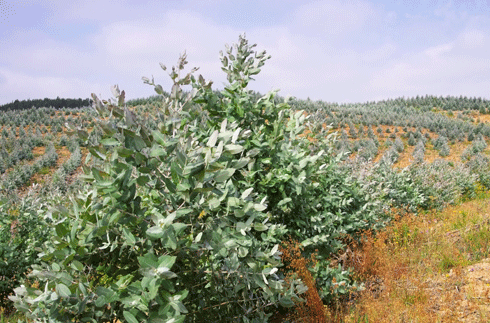
|
Published: 2 April 2013
Revegetation of native trees using degradable plastic film
A novel degradable plastic could dramatically improve the efficiency of native tree revegetation from seed in marginal low rainfall areas, which typically give low germination and establishment.

|
|
The increased propagation efficiency using the film should encourage landholders to increase the area they plant out to native trees. Credit:
© LianeM/istockphoto
|
The process is being developed by Greening Australia and Australian manufacturer, Integrated Packaging, through the CRC for Polymers.
The improved process involves using degrading ultra-thin plastic propagation film. The film is applied mechanically at the time that the seed is planted, and the film is buried at the edges to form a temporary ‘greenhouse’ to enhance plant growth.
The films can be tailored to remain intact for 3-6 months prior to degradation using technology developed by the CRC.
Native trees species thrive under the higher temperatures created by the film and show increased germination rates, therefore allowing a reduction in seeding rates and better use of indigenous seed banks.
The film provides additional benefits that include: capture and storage of soil moisture present at planting, the potential to expand the planting window, and early seedling growth needed to survive dry summer periods. Trials continue to be conducted at different times of the year to optimise the time of planting and ideal film life made possible by this polymer technology.
Native tree seeds are currently grown to seedlings in a nursery, then planted out by hand. The new technology will enable substantial time and cost savings as kilometres of native trees can be planted in just hours. This efficiency will not only make greater use of current tree planting resources, but also encourage landholders to increase their areas of native trees.
An initial trial of the polymer film conducted with the Birchip Cropping Group and Greening Australia showed its use can dramatically improve practices for re-establishing native woodlands, and so improve carbon capture and storage.
‘The potential benefit for our farmers is improved native revegetation, which is important for preventing the adverse effects of land degradation and providing food and shelter for native birds which naturally control insect pests,’ says Tim McClelland from the Birchip Cropping Group, who is involved in the ongoing trials.
The research which created the films’ degradation technology was a multidisciplinary collaboration between Integrated Packaging and researchers from Queensland University of Technology, University of Queensland, and CSIRO.
This technology provides greater control over timing the degradation of the film, both above and below the ground, opening up the possibility for use of these films in a wider range of agricultural applications. This low cost, high value technology has the potential to allow the re-establishment of wildlife rich woodlands into challenging semi-arid and degraded lands.
The technology was announced at a recent event to announce a five-year extension of funding for the CRC.
Source: CRC for Polymers



